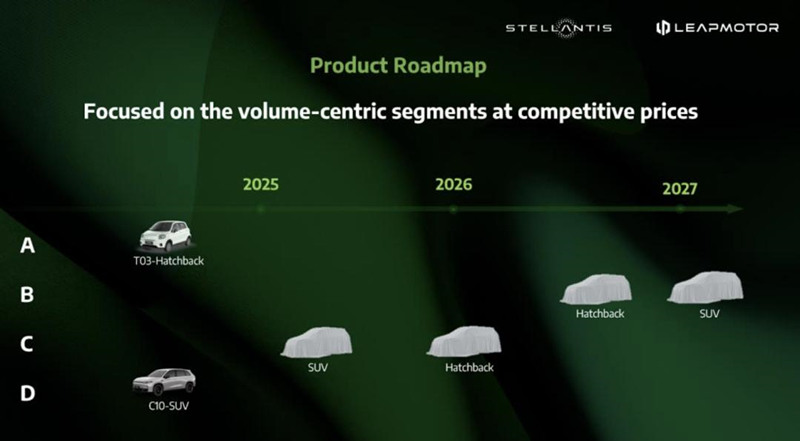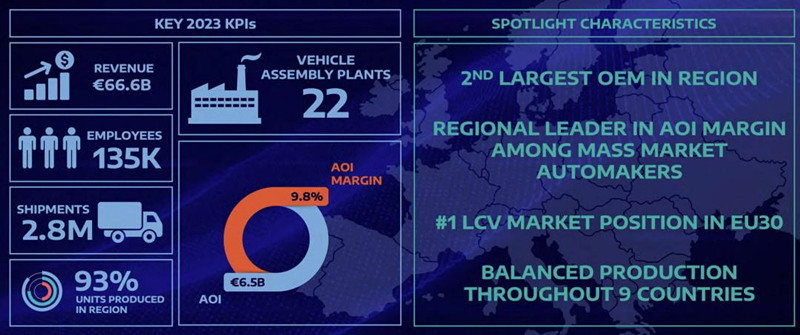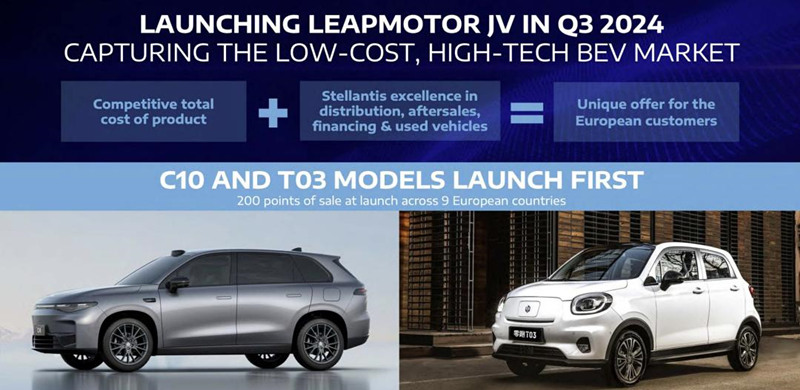- English
- Español
- Português
- русский
- Français
- 日本語
- Deutsch
- tiếng Việt
- Italiano
- Nederlands
- ภาษาไทย
- Polski
- 한국어
- Svenska
- magyar
- Malay
- বাংলা ভাষার
- Dansk
- Suomi
- हिन्दी
- Pilipino
- Türkçe
- Gaeilge
- العربية
- Indonesia
- Norsk
- تمل
- český
- ελληνικά
- український
- Javanese
- فارسی
- தமிழ்
- తెలుగు
- नेपाली
- Burmese
- български
- ລາວ
- Latine
- Қазақша
- Euskal
- Azərbaycan
- Slovenský jazyk
- Македонски
- Lietuvos
- Eesti Keel
- Română
- Slovenski
- मराठी
- Srpski језик
Stellantis: Bringing Leapmotor Production to Europe
In response to the European Union's imposition of tariffs on Chinese electric vehicles, Stellantis CEO Tang Weishi revealed that the Leapmotor car will transfer some production to Europe, which needs to reduce costs and maintain competitiveness in the European market under tariff barriers.
Faced with changes in the global trade environment, the company is taking measures to adapt to the needs of the international market. The implementation of the production transfer plan will help Leapmotor to enhance its competitiveness in the global market.


Part 1
Open Stellantis

Stellantis is a financially driven company that is redefining its competitive strategy in a weaker segment with an unprecedented openness in the electric vehicle space.
Faced with the cost advantage and technological leadership of China's pure electric vehicle manufacturers, Stellantis has chosen an unconventional path - not confrontation, but embracing cooperation and jointly exploring the market.
Carlos Tavares, CEO of Stellantis, made it clear that China is not only a rival but also a friend of cooperation. In response to the European Union's decision to impose high tariffs on Chinese-made electric vehicles, Tavares showed unusual insight. He believes that tariffs are not an effective means to solve the gap between Europe, the United States, and China's electric vehicle industry.
Stellantis strategic shift is designed to jointly address market challenges through in-depth cooperation with China, leveraging the cost competitiveness and technological innovation of Chinese enterprises.

The "asset-light strategy" adopted by Stellantis has reduced investment in the production of on-board batteries in Europe (ACC battery factory is suspended) and electric vehicles, and instead strengthened cooperation with Chinese battery giants like CATL to explore the possibility of jointly building a lithium iron phosphate battery factory, which can not only effectively control costs, but also avoid additional tariffs, paving the way for the launch of lower-priced and more competitive electric vehicles in the European market.


Part 2
Up-selling networks, bypassing trade barriers
Stellantis partnership with Zhejiang Leapmotor Technology is another example of its strategic shift. Selling Leapmotor's electric vehicles in multiple European countries through a joint venture not only avoids additional tariffs due to subsidies but also rapidly expands the product line to include SUVs and small cars, further broadening the market boundaries to the Middle East and South America.
Stellantis knows that the key to the popularity of electric vehicles is to win the favor of the middle class, and by working with Chinese partners to reduce production costs, making models under 25,000 euros profitable is one of its core strategies.

At the same time, Stellantis is undergoing internal restructuring and cost optimization, achieving its annual cost reduction target of 5 billion euros a year ahead of schedule, demonstrating its determination to streamline its business.
The adjustment of personnel structure and the improvement of production efficiency are all aimed at gaining stronger bargaining power and higher profit margins in cooperation, to occupy a more favorable position in the global electric vehicle market.
------------------------------------------------------------------------------------------------------------------------------------------------------------------------------------------------------------------------------------------------



